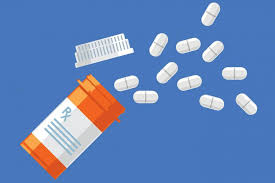

Walk into your local pharmacy today, you might pick up a bottle of shampoo, some chips and a prescription. Although those seem like similar purchases, one is very different. While you choose which brand of shampoo, your doctor chooses which brand of drug you need. And while everyone pays the same price for the chips, you may pay more for the same prescription than the person next to you and less than the person next to her. How are prescription costs really determined?
It starts with a drug manufacturer's list price, but this isn't the money a manufacturer makes. First, a wholesaler buys the drugs. Three major wholesalers control 90 percent of the market. These Fortune 25 companies can negotiate discounts off the list price. Then they mark up the drug and sell it to a pharmacy. That's how the drug gets to the store, but it's not the price you pay.
That's because of insurance. There are many kinds of insurance, but for many of us, insurance comes through. Our employer, that employer, or the insurance company they work with hires a pharmacy benefits manager or PBM to negotiate a rebate from the drugs manufacturer. Different PBS may negotiate different rebates. Three large PBS control 75 percent of the market. If different manufacturers offer similar drugs, these PBS can drive a hard bargain, further reducing the manufacturer's net price. What PBS do with the rebate varies. They may pass it to your employer, keep some of it, or keep all of it. The amount the PBM retains becomes part of their profit.
Your employer agrees to pay a portion of the drug's cost, but the amount they pay may be different from the amount paid by other employers. Confusing HUH based on what the employer expects to pay and how much rebate their PBM negotiated, the drug goes on a Coppa tier set by your insurance company that determines your out-of-pocket cost. There are preferred brand tiers, non-preferred brand tiers, and more. The higher the tier, the more you pay regardless of the drug's list price.
Indeed your copay has less to do with the drugs list price than with how much your insurance agrees to cover. That's why different employers and insurance plans put the same drugs on different tiers. While this enables consumer choice in insurance plans, it can also be frustrating. For example, when a plan moves a drug from one tier to another at the pharmacy, you pay your portion and the PBM reimburses the pharmacy using a complex calculation. They then charge that cost plus a fee back to the insurance company WW. So while the list price is often used in stories about prescription drug costs, it's not what the drug company makes. It's almost never what a consumer or anyone else in the healthcare system pays and most of the control over the final cost to you, the patient rest with your insurance company or employer and the PBM. The system functions best when all players work together for the benefit of the patient.
There is A Better Way AMerica
